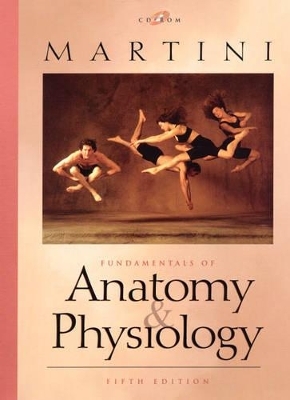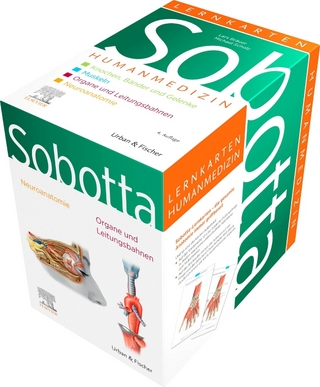
Fundamentals of Anatomy and Physiology and CD
Pearson
978-0-13-090137-8 (ISBN)
- Titel erscheint in neuer Auflage
- Artikel merken
For combined courses in Anatomy and Physiology, taken by majors in allied health, health, and physical education.
Form meets function in Martini's Fundamentals of Anatomy and Physiology—every element of the text is designed carefully to enhance student comprehension and to anticipate instructor's needs. Long known for its outstanding art program, readability, and innovative teaching and learning system, this text also offers a well-integrated media program that provides excellent classroom support and encourages independent learning.
(NOTE: Each chapter begins with Introduction and concludes with Medialab and Chapter Review.)
1. An Introduction to Anatomy and Physiology.
The Sciences of Anatomy and Physiology. Levels of Organization. Homeostasis and System Integration. A Frame of Reference for Anatomical Studies. Focus: Sectional Anatomy and Clinical Technology.
2. The Chemical Level of Organization.
Atoms and Molecules. Chemical Reactions. Focus: Chemical Notation. Inorganic Compounds. Organic Compounds. Chemicals and Cells.
3. The Cellular Level of Organization.
Studying Cells. The Cell Membrane. The Cytoplasm. The Nucleus. The Cell Life Cycle. Cell Diversity and Differentiation.
4. The Tissue Level of Organization.
Epithelial Tissue. Connective Tissues. Membranes. The Connective Tissue Framework of the Body. Muscle Tissue. Neural Tissue. Tissue Injuries and Aging.
5. The Integumentary System.
The Epidermis. The Dermis. The Subcutaneous Layer. Accessory Structures. Local Control of Integumentary System. Aging and the Integumentary System. Integration with Other Systems.
6. Osseous Tissue and Skeletal Structure.
A Classification of Bones. Bone Histology. Bone Development and Growth. The Dynamic Nature of Bone. Focus: A Classification of Fractures. Bone Markings (Surface Features). Integration with Other Systems.
7. The Axial Skeleton.
The Skull. Focus: The Individual Bones of the Skull. Cranial Bones. Facial Bones. The Vertebral Column. The Thoracic Cage.
8. The Appendicular Skeleton.
The Pectoral Girdle and Upper Limbs. The Pelvic Girdle and Lower Limbs. Individual Variation in the Skeletal System.
9. Articulations.
A Classification of Joints. Articular Form and Function. Representative Articulations. Aging and Articulations. Bones and Muscles.
10. Muscle Tissue.
Skeletal Muscle Tissue and the Muscular System. Anatomy of Skeletal Muscle. Contraction of Skeletal Muscle. Focus: The Contraction Cycle. Muscle Mechanics. Aging and the Muscular System. Integration with Other Systems. Cardiac Muscle Tissue. Smooth Muscle Tissue.
11. The Muscular System.
Biomechanics and Muscle Anatomy. Muscle Terminology. The Axial Muscles. The Appendicular Muscles.
12. Neural Tissue.
An Overview of the Nervous System. Neurons. Neuroglia. Focus: Neural Responses to Injuries. Neurophysiology. Synaptic Activity. Information Processing. Higher Levels of Organization and Processing. Integration with Other Systems.
13. The Spinal Cord and Spinal Nerves.
Gross Anatomy of the Spinal Cord. Spinal Nerves. An Introduction to Reflexes. Spinal Reflexes. Integration and Control of Spinal Reflexes.
14. The Brain and Cranial Nerves.
An Introduction to the Organization of the Brain. Protection and Support of the Brain. The Cerebrum. The Limbic System. The Diencephalon. The Mesencepalon. The Cerebellum. The Pons. The Medulla Oblongata. Focus: Cranial Nerves. A Summary of Cranial Nerve Branches and Functions.
15. Integrative Functions.
Somatic Sensory and Motor Pathways. Monitoring Brain Activity: The Electroencephalogram. Higher-Order Functions. Brain Chemistry and Behavior. Aging and the Nervous System.
16. The Autonomic Nervous System.
An Overview of the Ans. The Sympathetic Division. The Parasympathetic Division. Interactions of the Sympathetic and Parasympathetic Divisions. Integration and Control of Autonomic Functions.
17. Sensory Function.
Receptors and Receptor Function. The General Senses. Olfaction. Gustation. Vision. Equilibrium and Hearing.
18. The Endocrine System.
An Overview of the Endocrine System. The Pituitary Gland. The Thyroid Gland. The Parathyroid Glands. The Adrenal Glands. The Pineal Gland. The Endocrine Tissues of Other Systems. Patterns of Hormonal Interaction. Integration with Other Systems.
19. Blood.
Functions of Blood. Composition of Blood. Plasma. Formed Elements. Hemostasis.
20. The Heart.
An Overview of the Cardiovascular System. Anatomy of the Heart. The Heartbeat. Cardiodynamics. The Heart and the Cardiovascular System.
21. Blood Vessels and Circulation.
The Anatomy of Blood Vessels. Cardiovascular Physiology. Cardiovascular Regulation. Patterns of Cardiovascular Response. Focus: Special Circulation. The Blood Vessels. Aging and the Cardiovascular System. Integration with Other Systems.
22. The Lymphatic System and Immunity.
An Overview of the Lymphatic System. Organization of the Lymphatic System. Nonspecific Defenses. Specific Defenses: The Immune Response. Summary: The Immune Response. The Development of Resistance. Immune Disorders. Stress and the Immune Response. Aging and the Immune Response. Integration with Other Systems.
23. The Respiratory System.
Functions of the Respiratory System. Organization of the Respiratory System. The Upper Respiratory System. The Larynx. The Trachea. The Primary Bronchi. The Lungs. The Pleural Cavities and Pleural Membranes. Respiratory Physiology. Control of Respiration. Changes in the Respiratory System at Birth. Aging and the Respiratory System. Integration with Other Systems.
24. The Digestive System.
An Overview of the Structure and Function of the Digestive Tract. The Oral Cavity. The Pharynx. The Esophagus. The Stomach. The Small Intestine and Associated Glandular Organs. The Large Intestine. Digestion and Absorption. Aging and the Digestive System. Integration with Other Systems.
25. Metabolism and Energetics.
An Overview of Metabolism. Carbohydrate Metabolism. Lipid Metabolism. Protein Metabolism. Nucleic Acid Metabolism. Metabolic Interactions. Diet and Nutrition. Bioenergetics.
26. The Urinary System.
Organization of the Urinary System. The Kidneys. Renal Physiology. Urine Transport, Storage, and Elimination. Aging and the Urinary System. Integration with Other Systems.
27. Fluid, Electrolyte, and Acid-Base Balance.
Fluid Balance and Electrolyte Balance. Acid-Base Balance. Disturbances of Acid-Base Balance. Aging and Fluid, Electrolyte, and Acid-Base Balance.
28. The Reproductive System.
An Overview of the Reproductive System. The Reproductive System of the Male. The Reproductive System of the Female. The Physiology of Sexual Intercourse. Aging and the Reproductive System. Integration with Other Systems.
29. Development and Inheritance.
An Overview of Topics in Development. Fertilization. An Overview of Prenatal Development. The First Trimester. The Second and Third Trimesters. Labor and Delivery. Postnatal Development. Genetics, Development, and Inheritance.
| Erscheint lt. Verlag | 22.8.2000 |
|---|---|
| Sprache | englisch |
| Gewicht | 3569 g |
| Themenwelt | Studium ► 1. Studienabschnitt (Vorklinik) ► Anatomie / Neuroanatomie |
| Studium ► 1. Studienabschnitt (Vorklinik) ► Physiologie | |
| ISBN-10 | 0-13-090137-7 / 0130901377 |
| ISBN-13 | 978-0-13-090137-8 / 9780130901378 |
| Zustand | Neuware |
| Haben Sie eine Frage zum Produkt? |
aus dem Bereich



